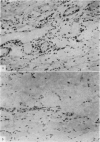Abstract
Peritoneal exudate lymphocytes (PEL), purified on glass beads and lymph node (LN) cells from guinea-pigs immunized with tubercle bacilli were cultured for 24 hours, in serum-free medium, without and with various concentrations of Tuberculin PPD.
Supernatants obtained from cultures with 10 μg PPD/107 lymphocytes provoked an intense inflammatory reaction, when injected into the skin of normal guinea-pigs. PEL were more active than LN cells from the same animals. The reaction was characterized by erythema and induration, with a peak between 3 and 6 hours and histologically a mixed polymorphonuclear—mononuclear infiltrate in the dermis was seen. When fractionated on Sephadex G-200, skin activity of both PEL and LN supernatants was concentrated in a peak corresponding to the molecular weight of serum albumin, while in LN material some activity was also present in a small molecular weight peak. The active material could be separated from albumin by chromatography on DEAE-cellulose. Immunoelectrophoretic analysis of skin reactive peaks detected a slow α-globulin in both PEL and LN supernatants. PPD in the form of a complex with a protein precipitated by anti-γG antiserum, was detected in the skin-active Sephadex peak III of LN supernatants, by radioimmunoelectrophoresis. Skin activity was precipitated with ammonium sulphate at 66 per cent saturation and was destroyed by pepsin treatment. Formation of the skin-active material was depressed by Puromycin and Actinomycin-D and the development of skin inflammation was suppressed by pretreatment of the recipient with anti-lymph node extract serum.
Evidence for antigen induced specific synthesis and release of an α-globulin in PEL and LN cultures was found but its relation to the skin active material is unknown.
Full text
PDF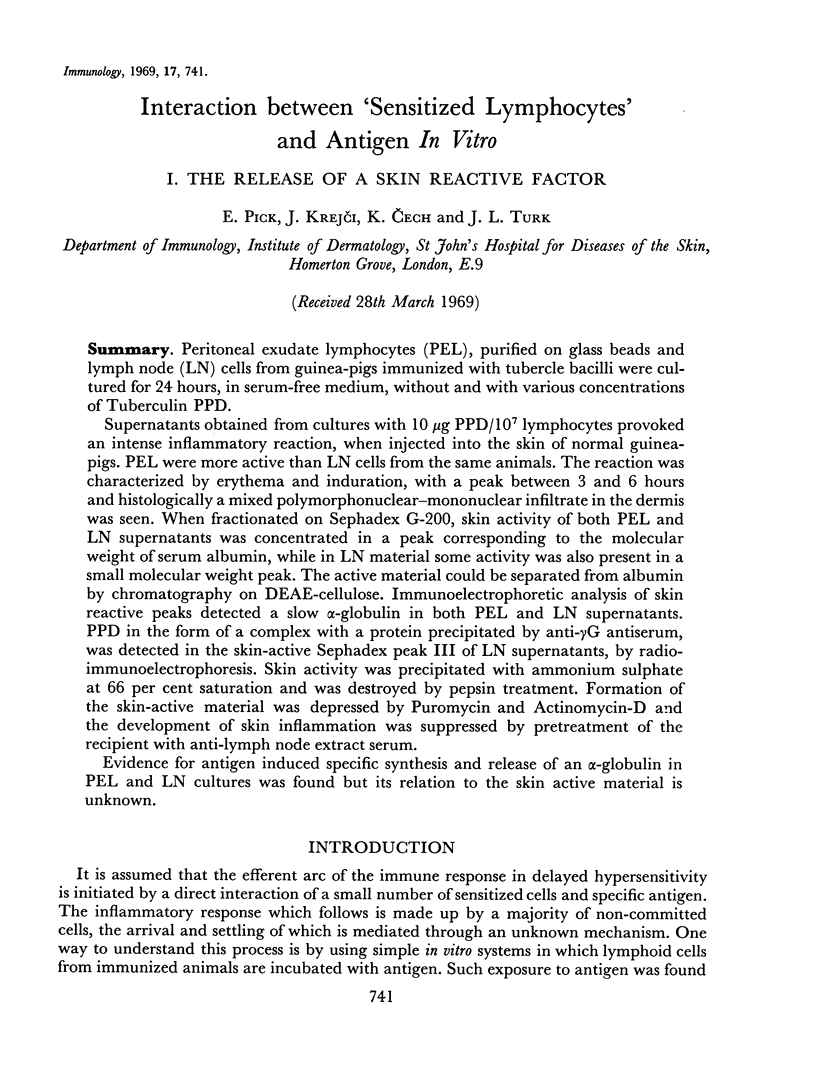
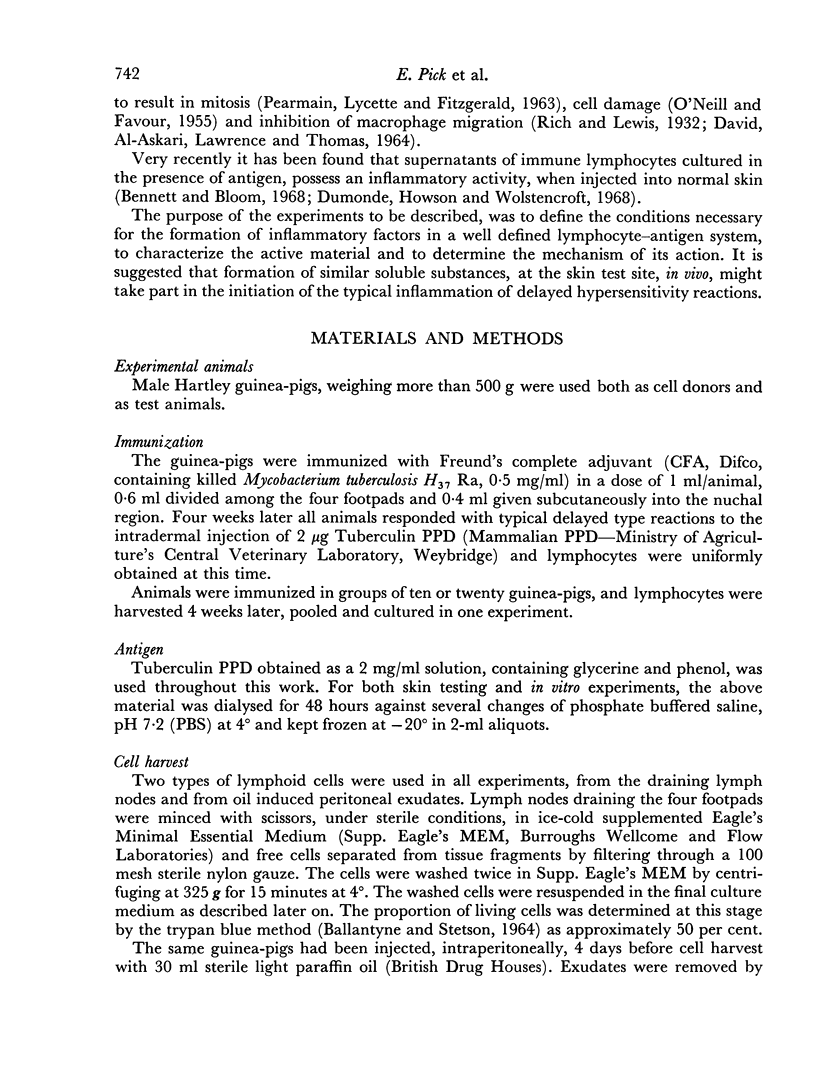
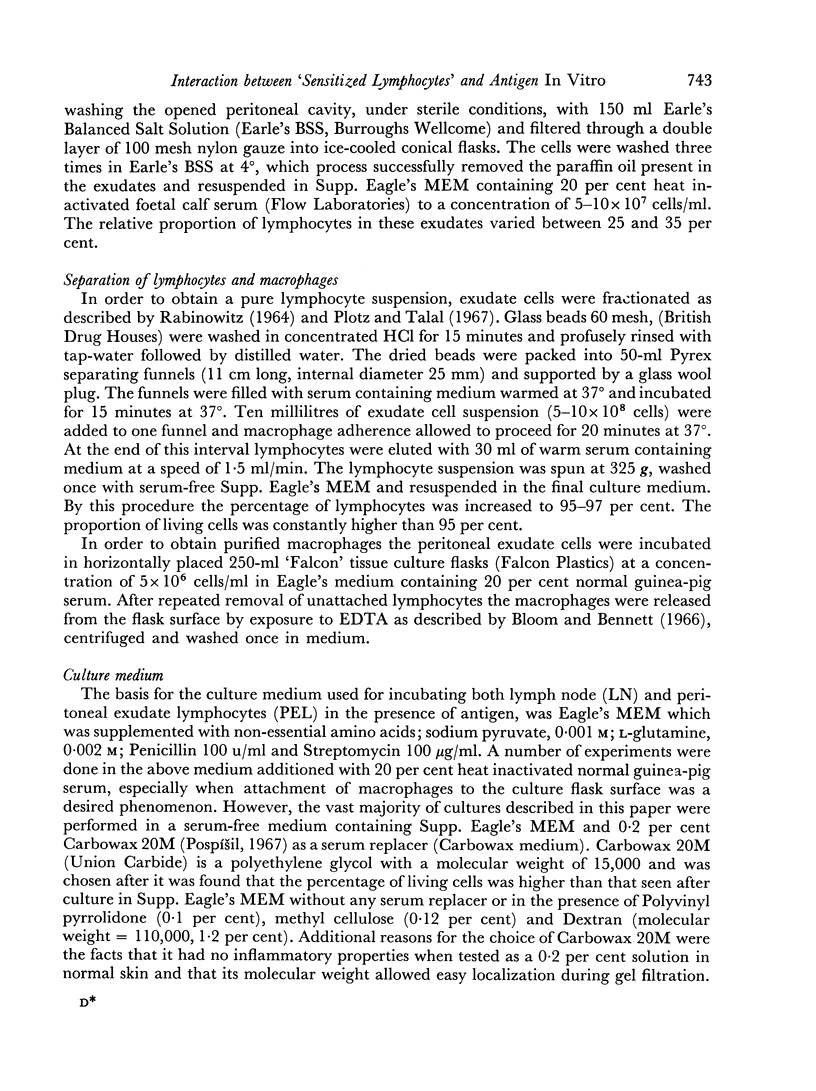
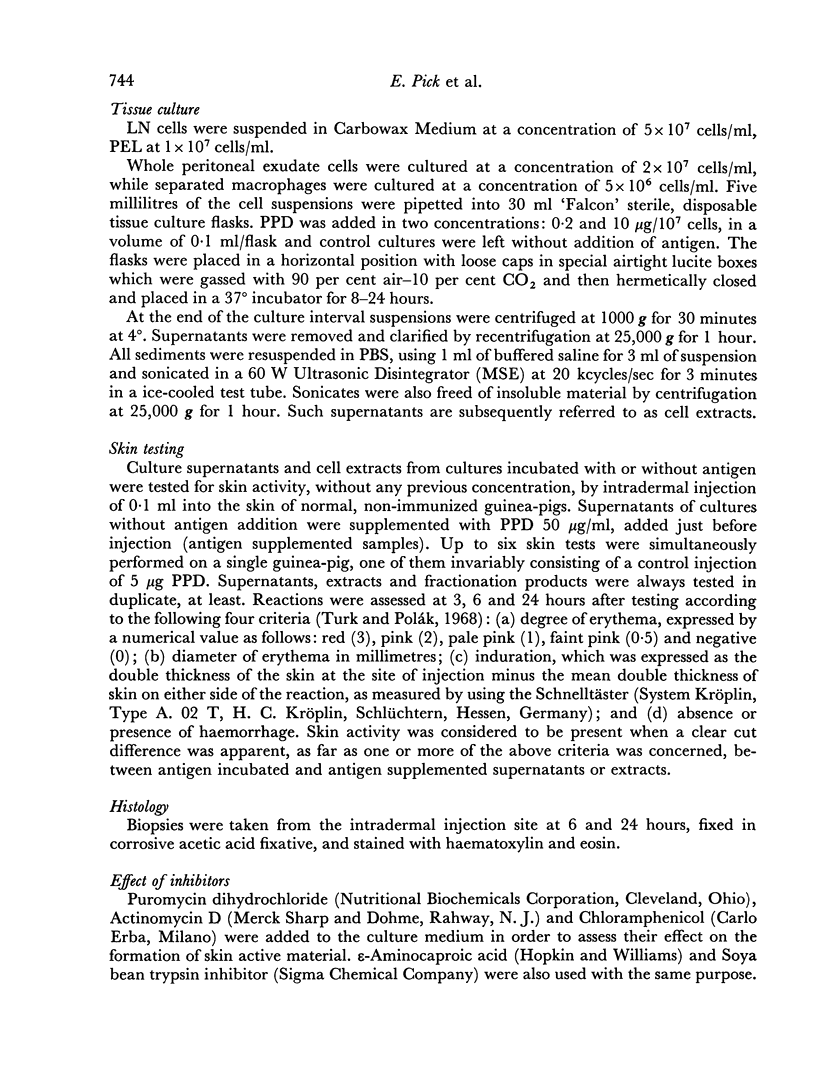
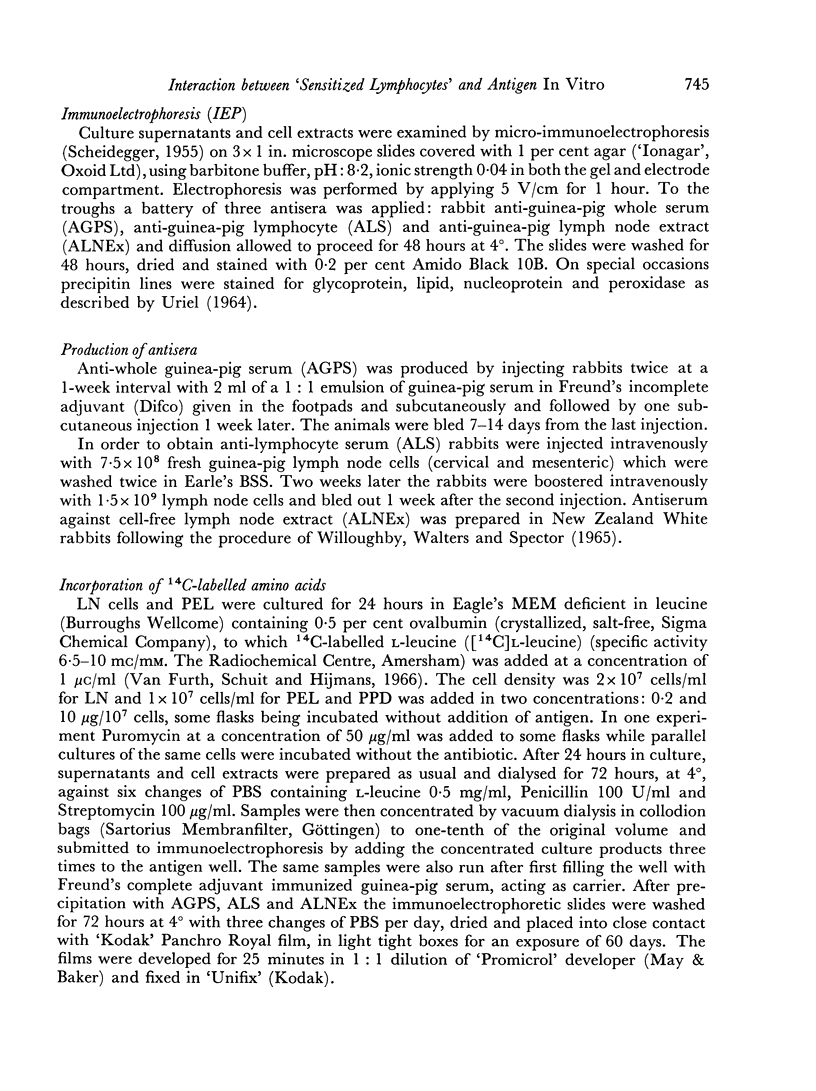
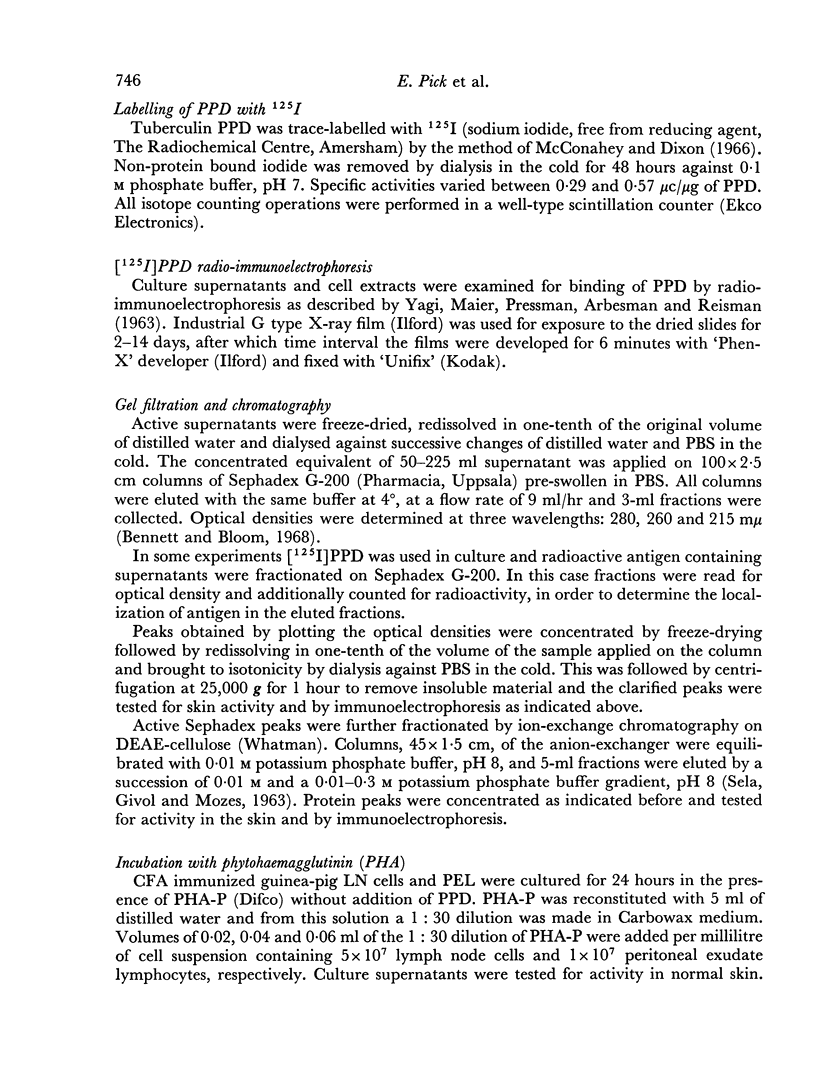
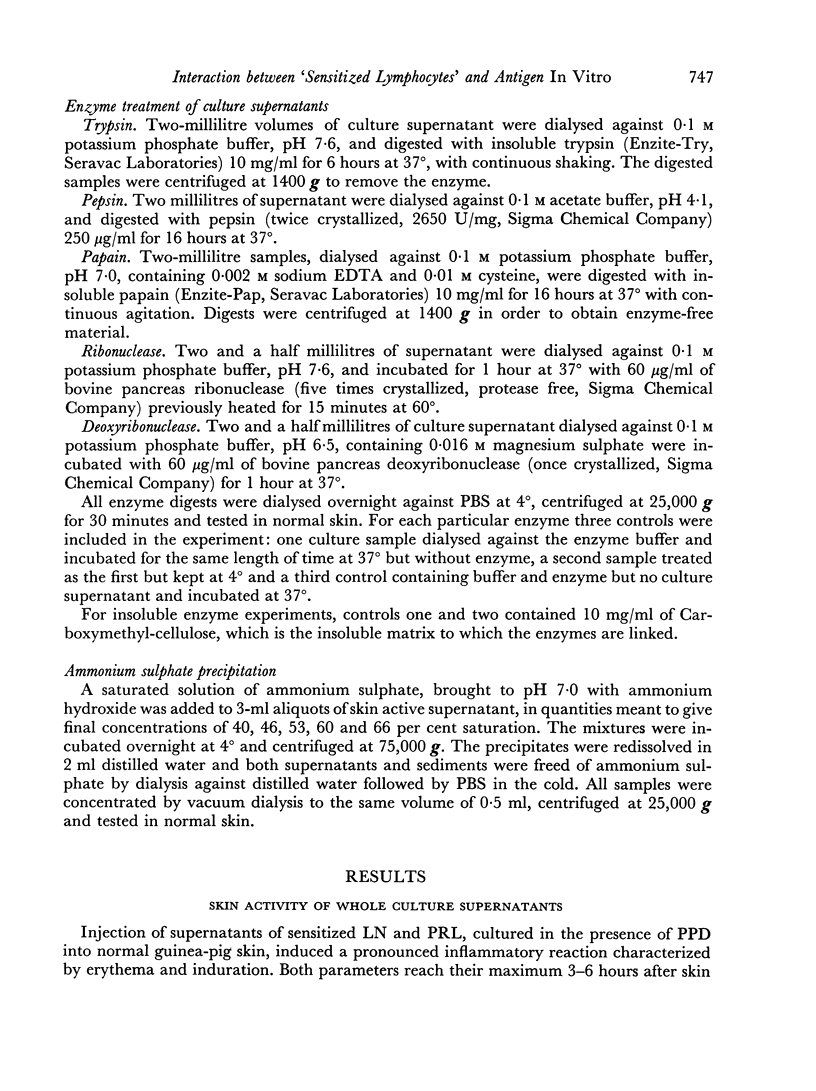
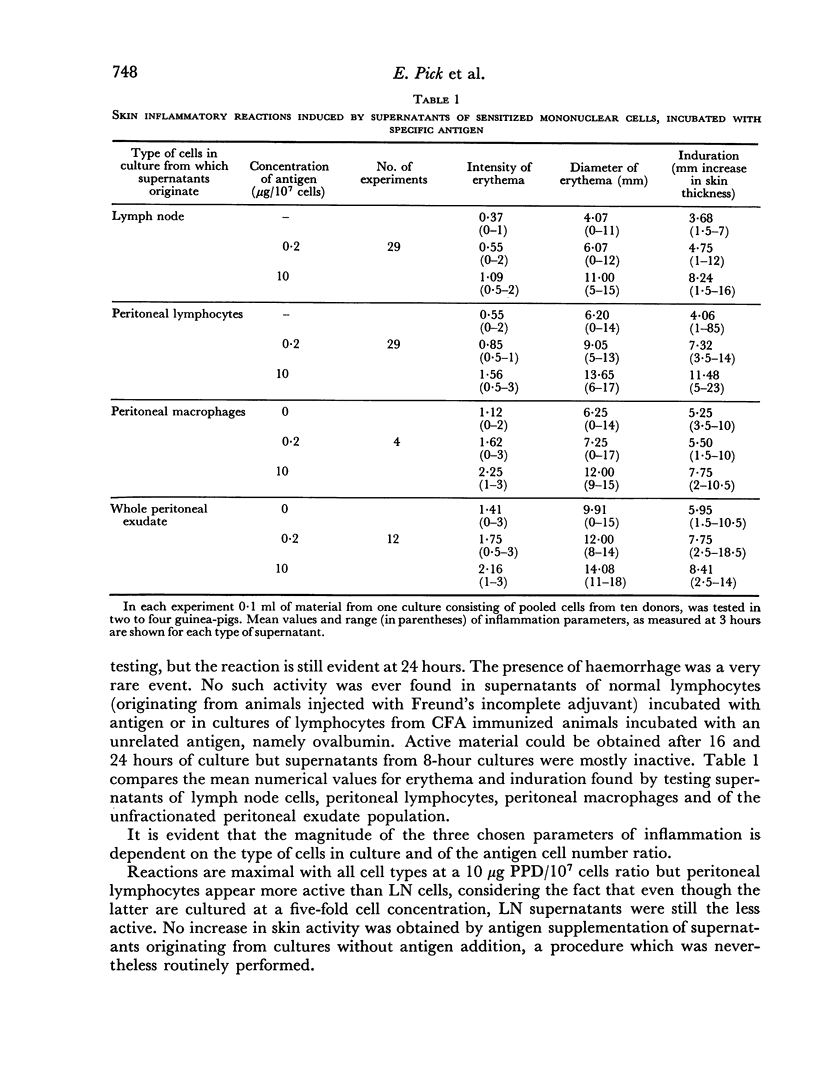
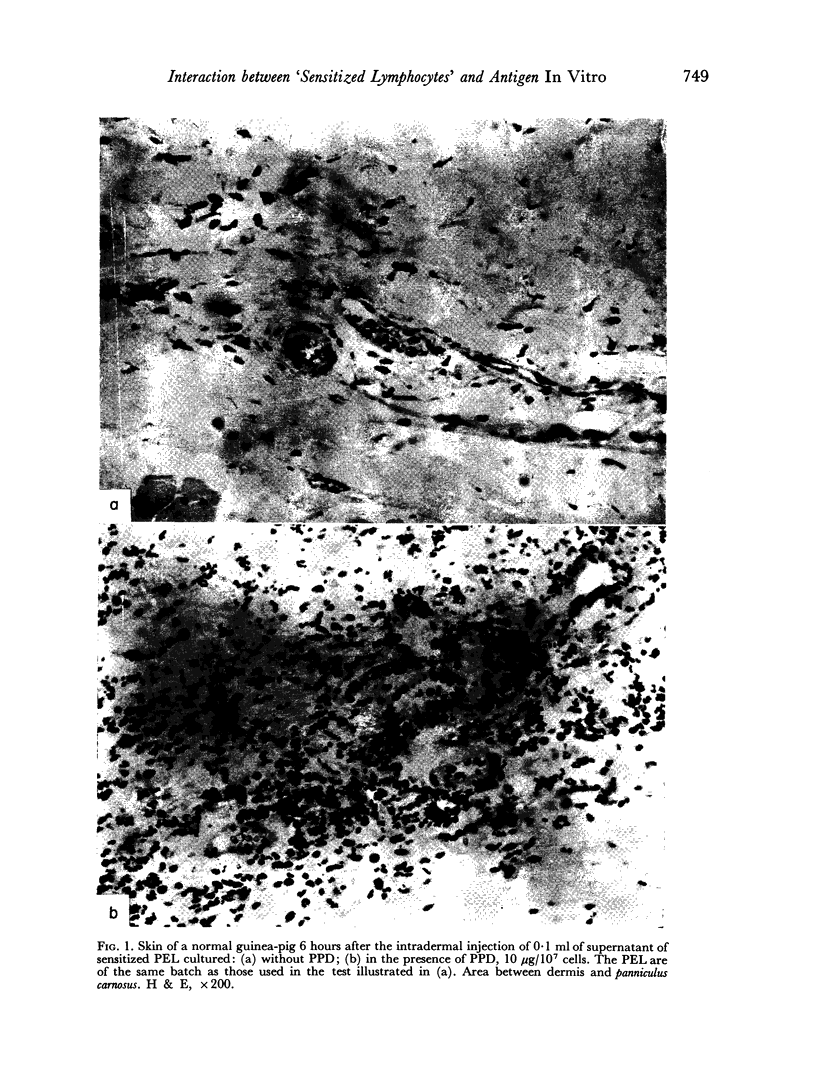
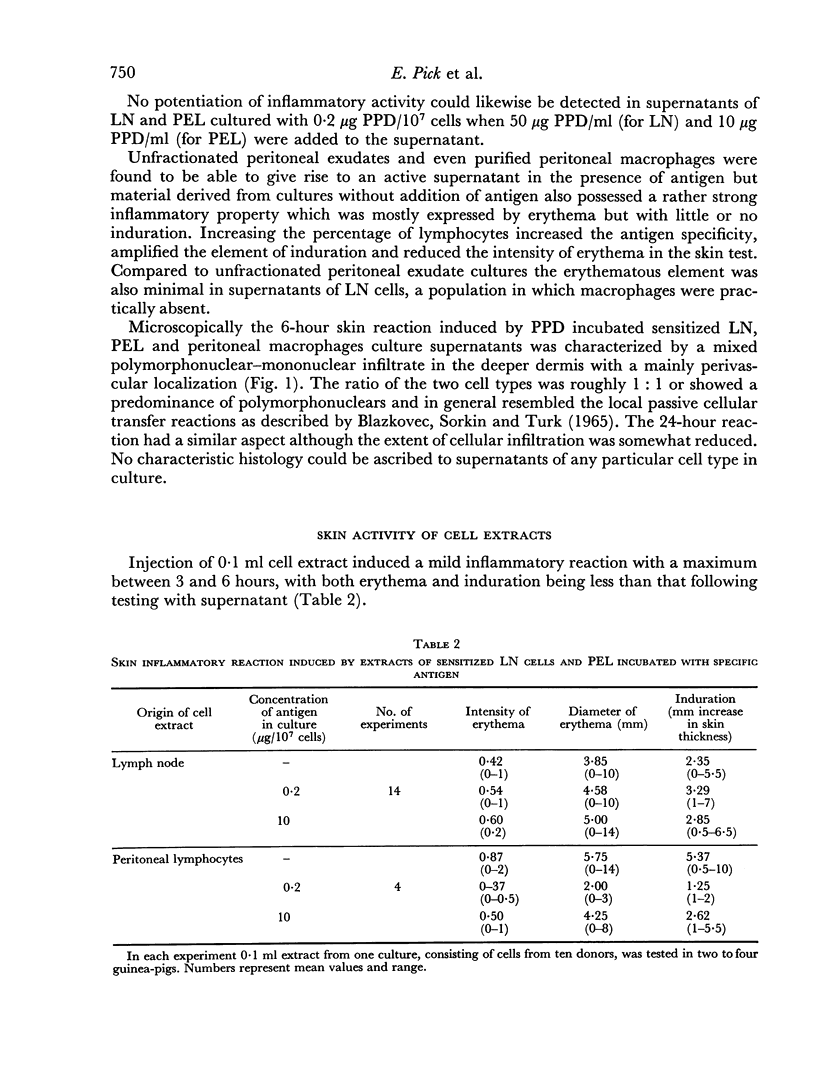
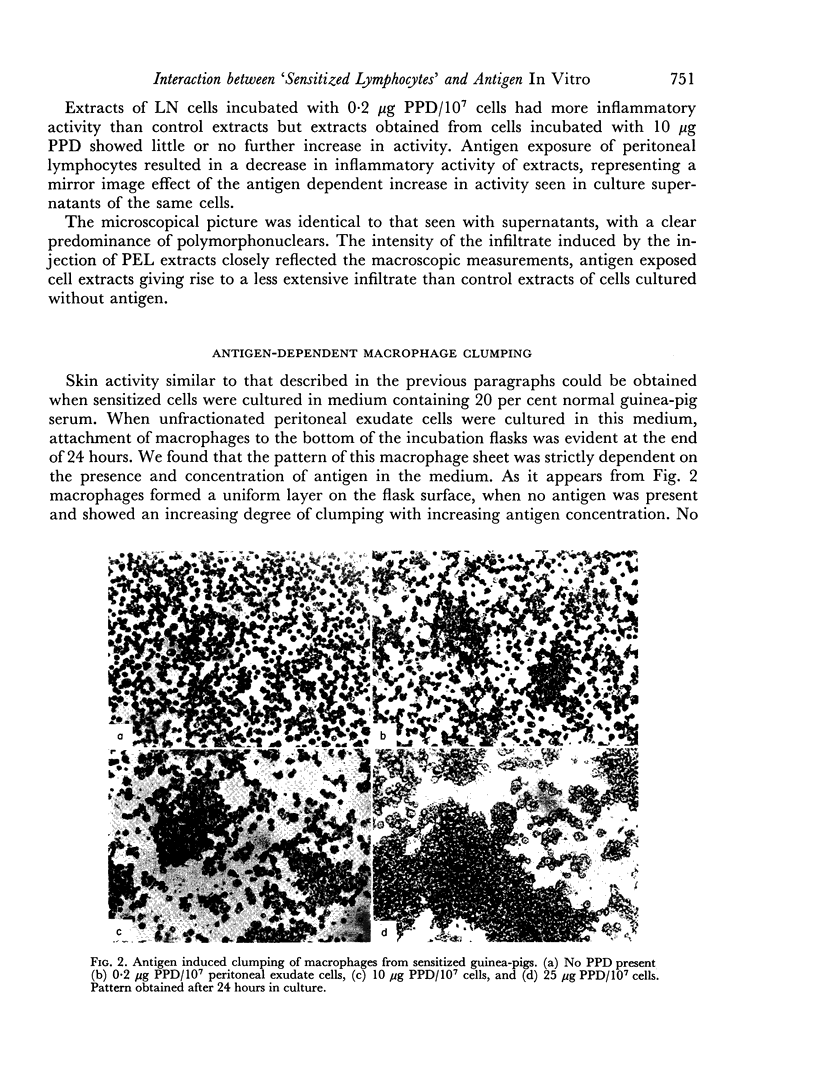
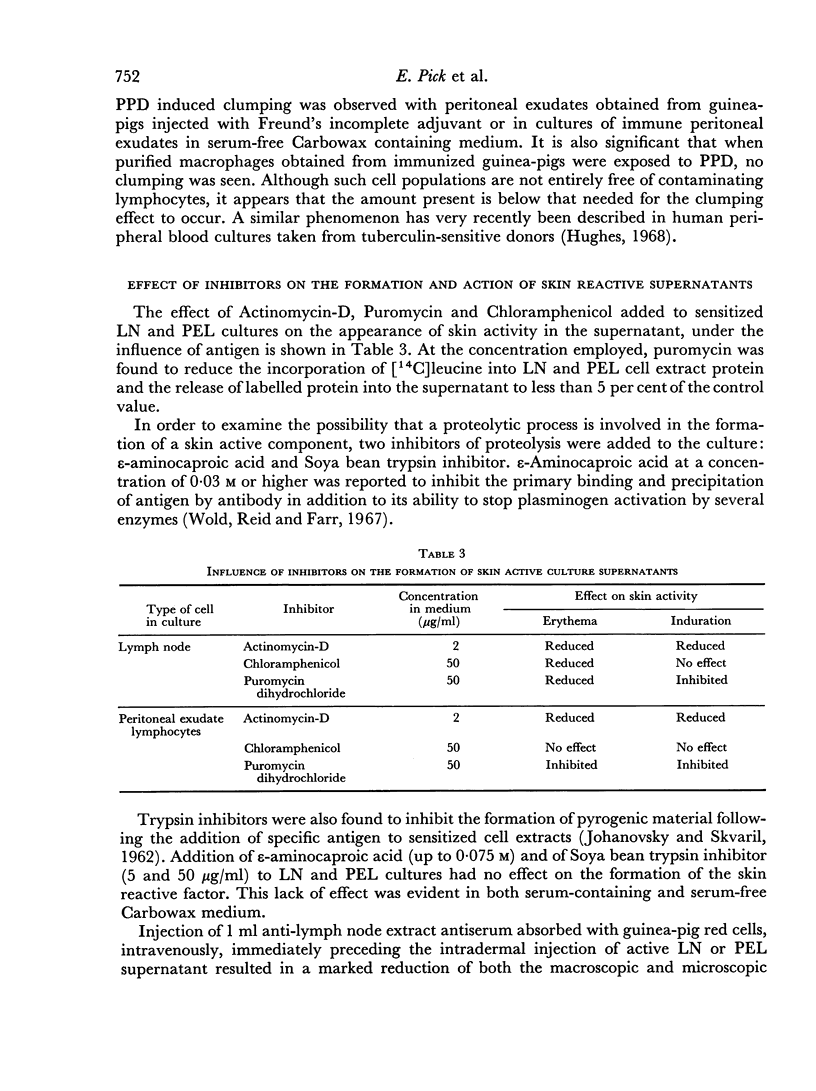

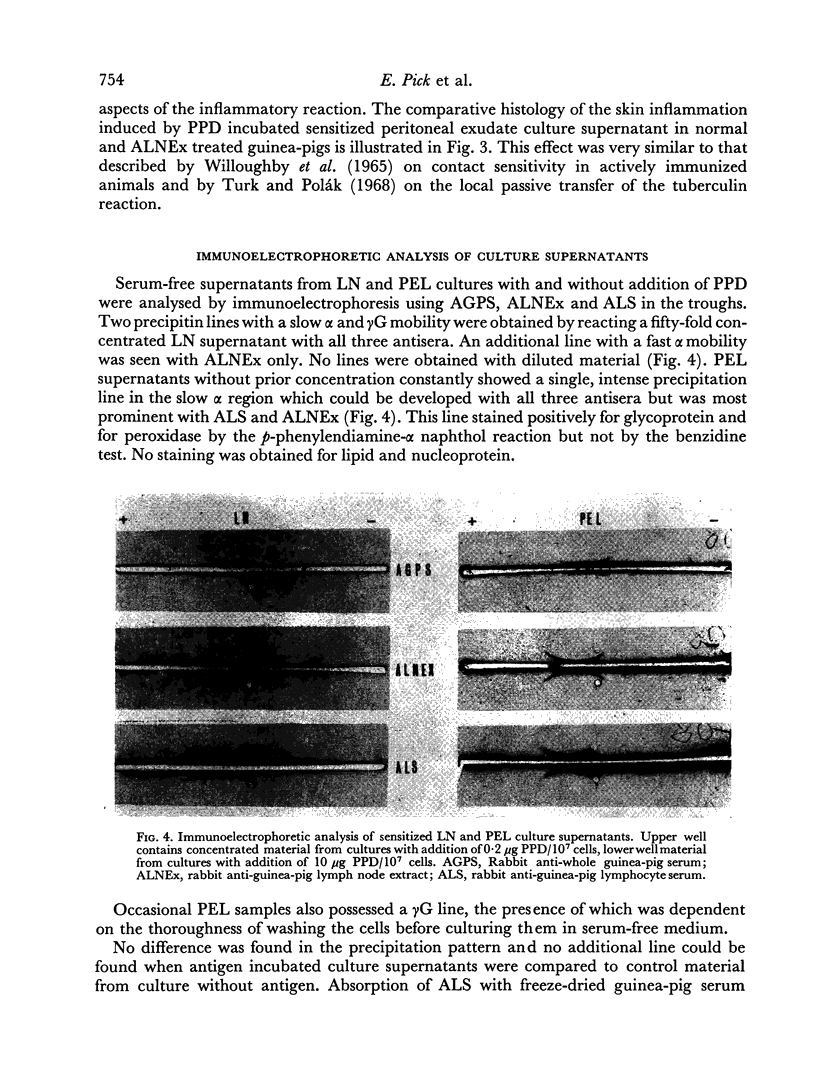
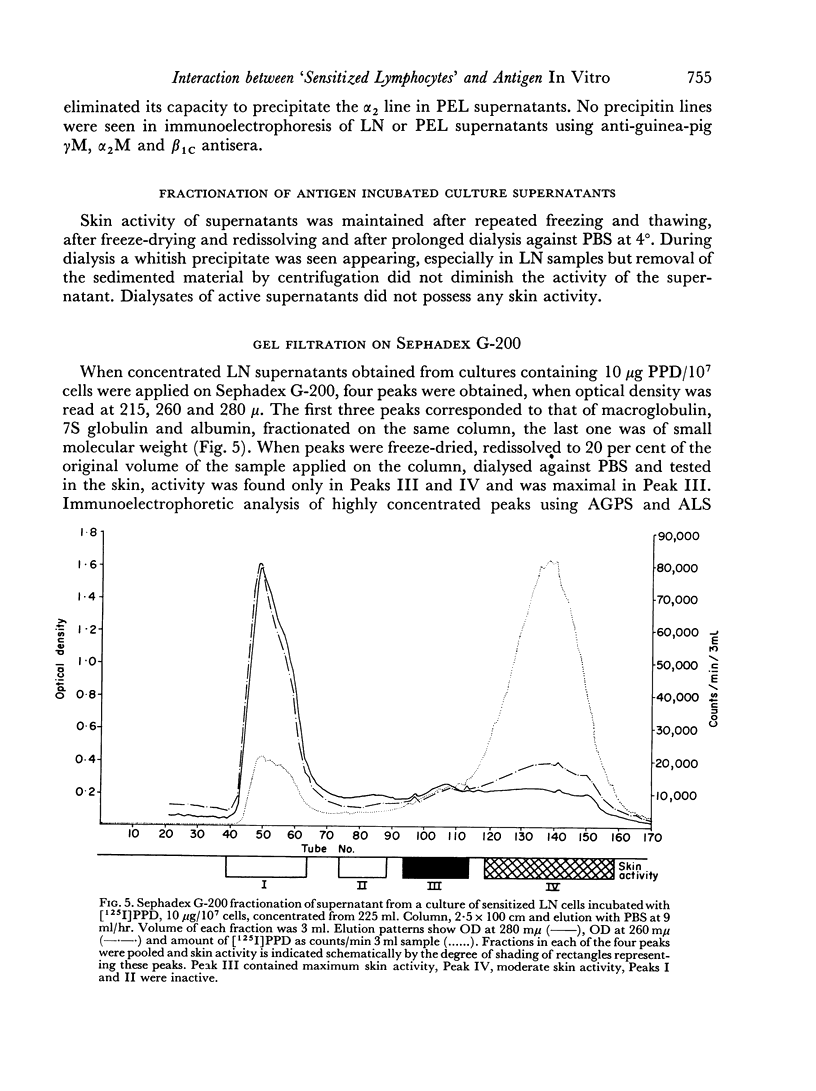
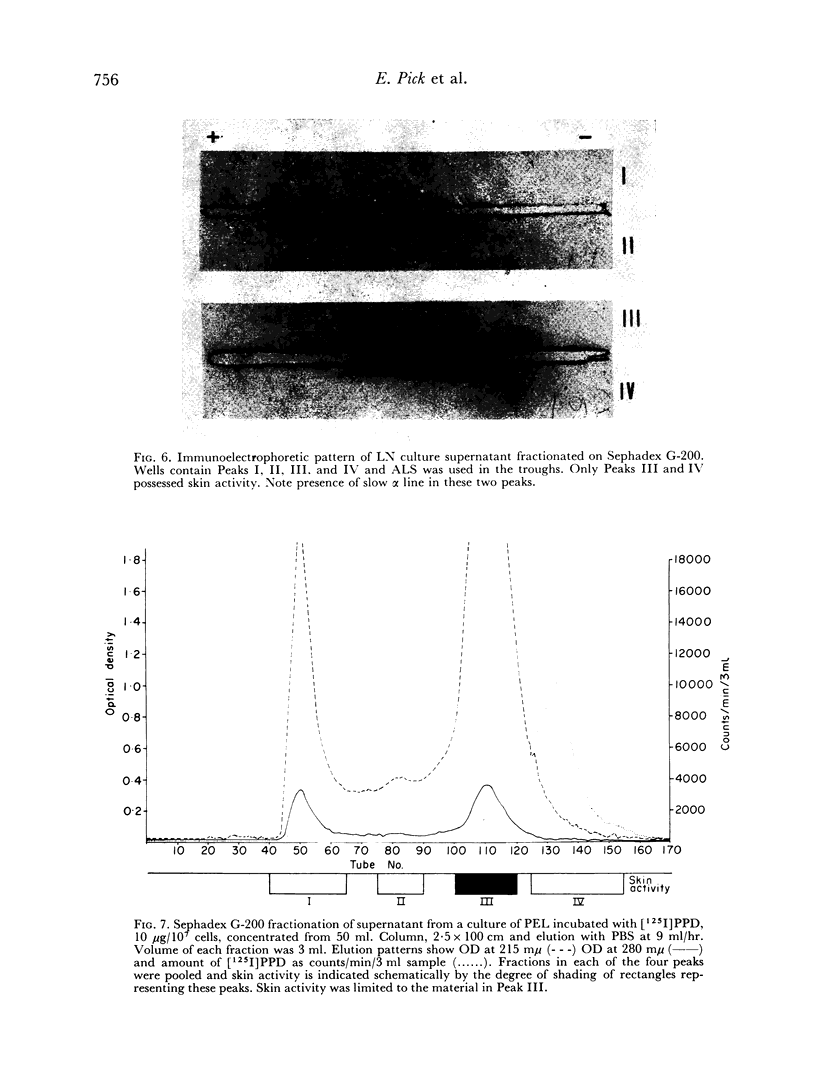

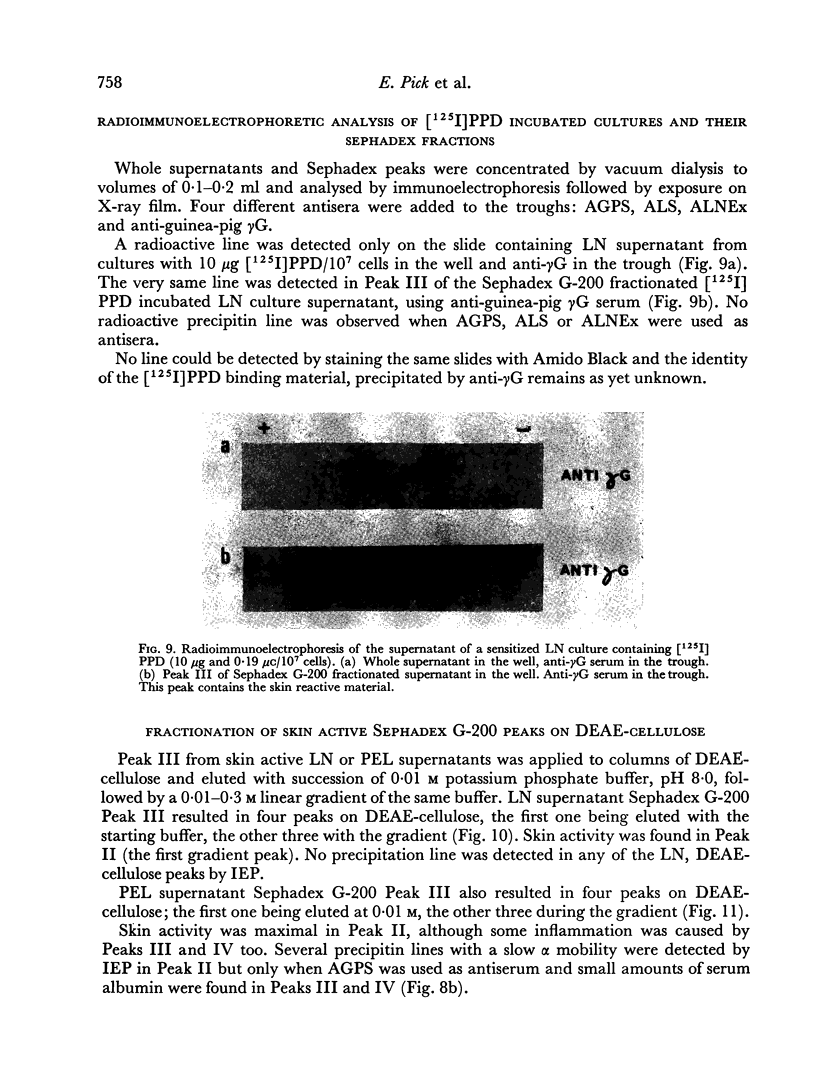
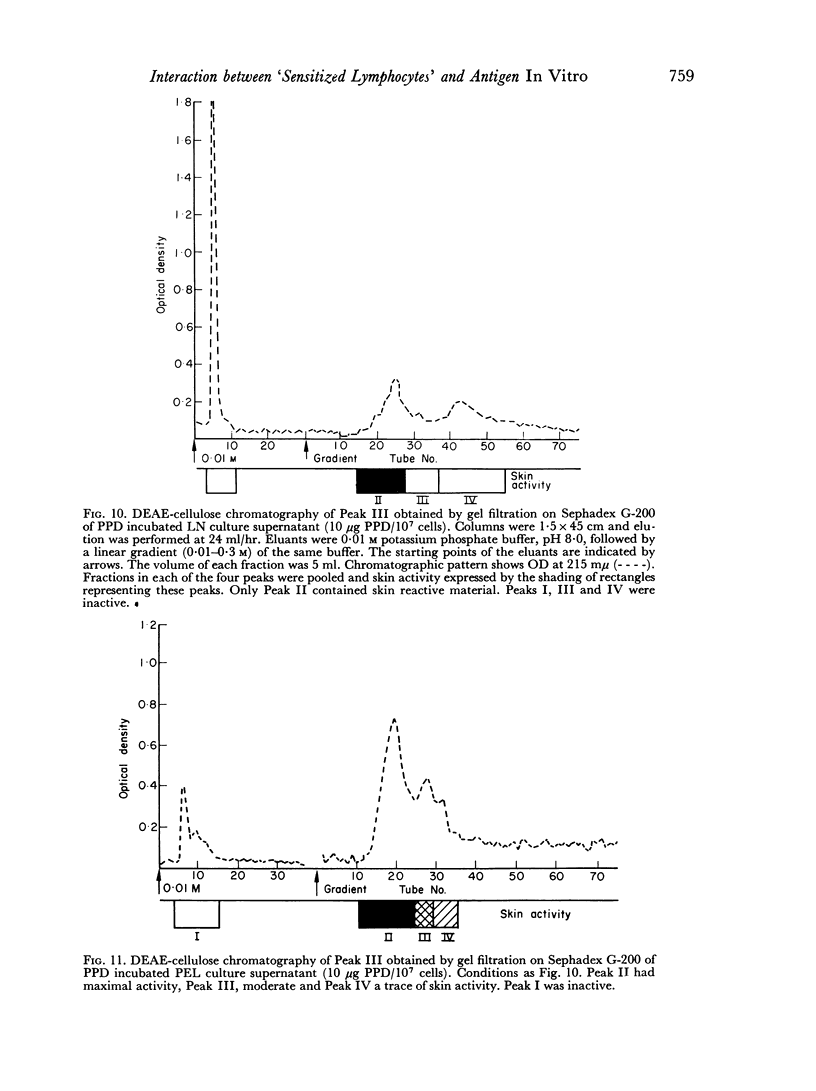
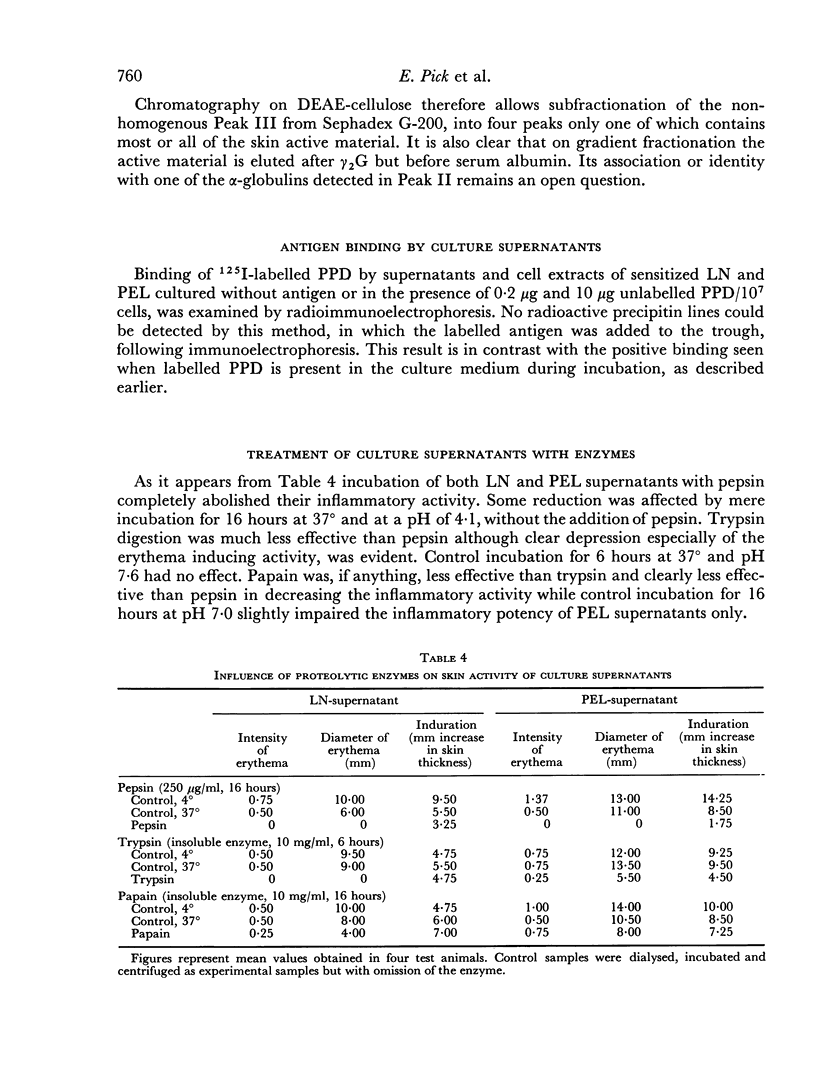

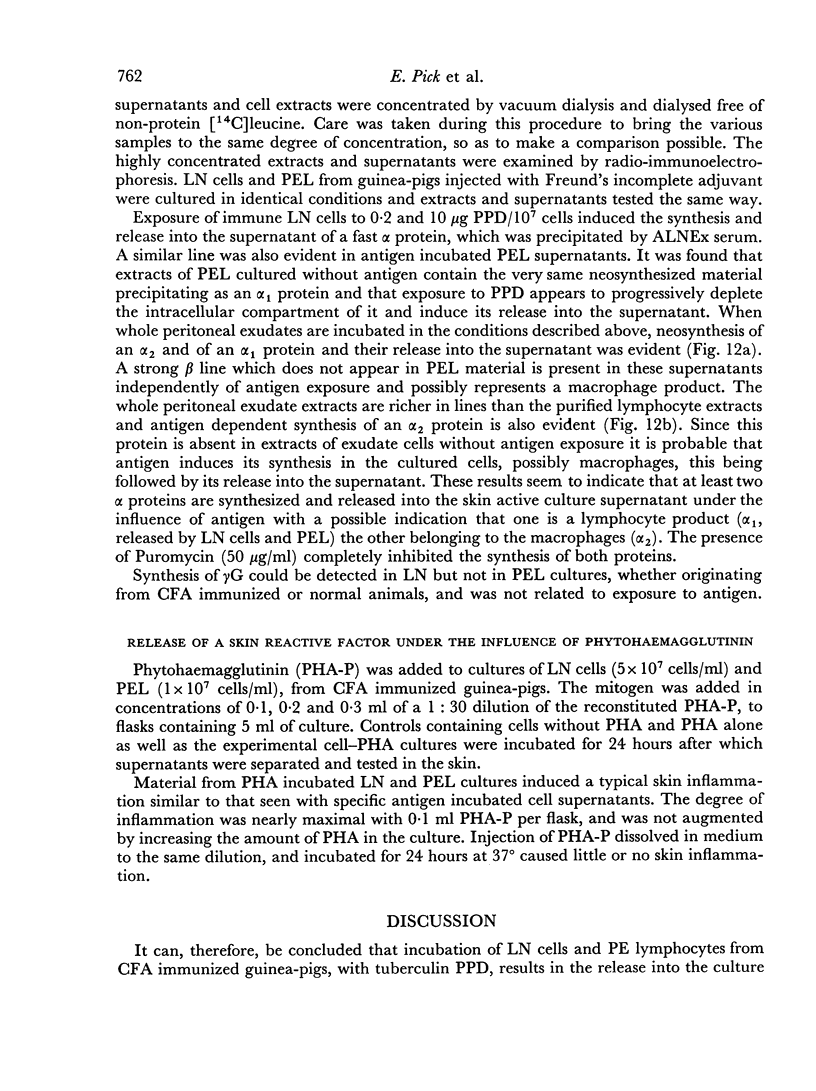
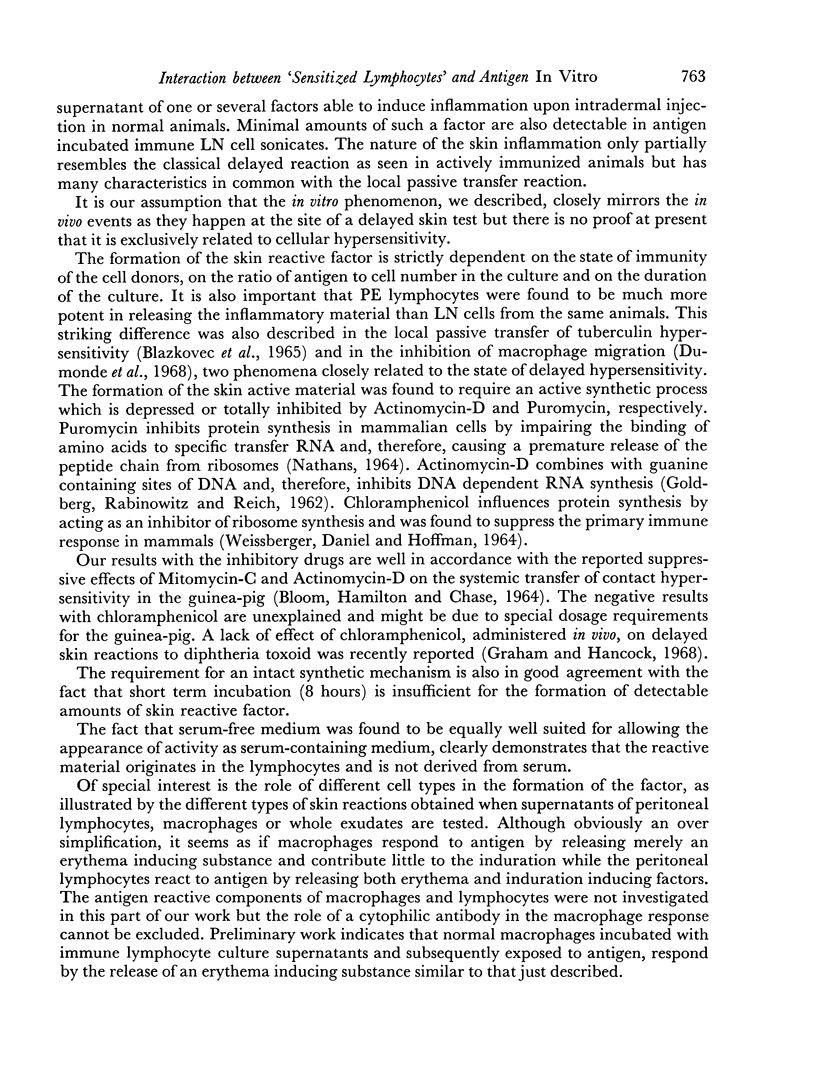
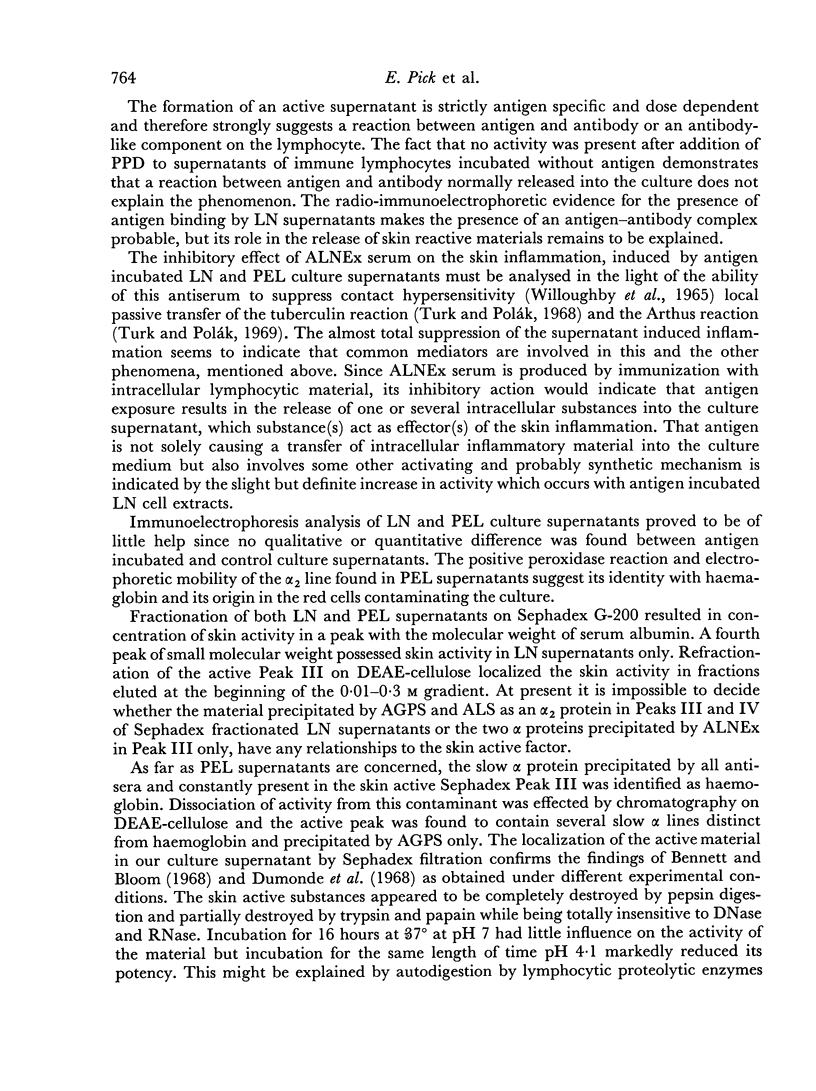
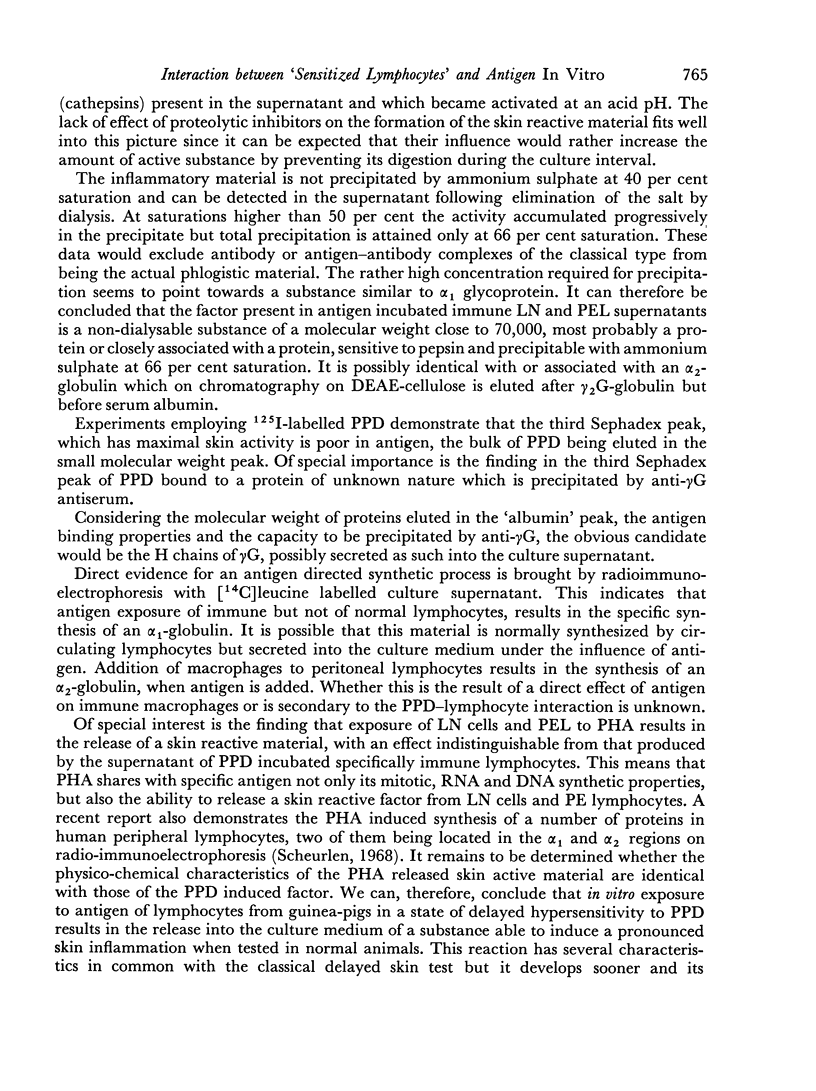
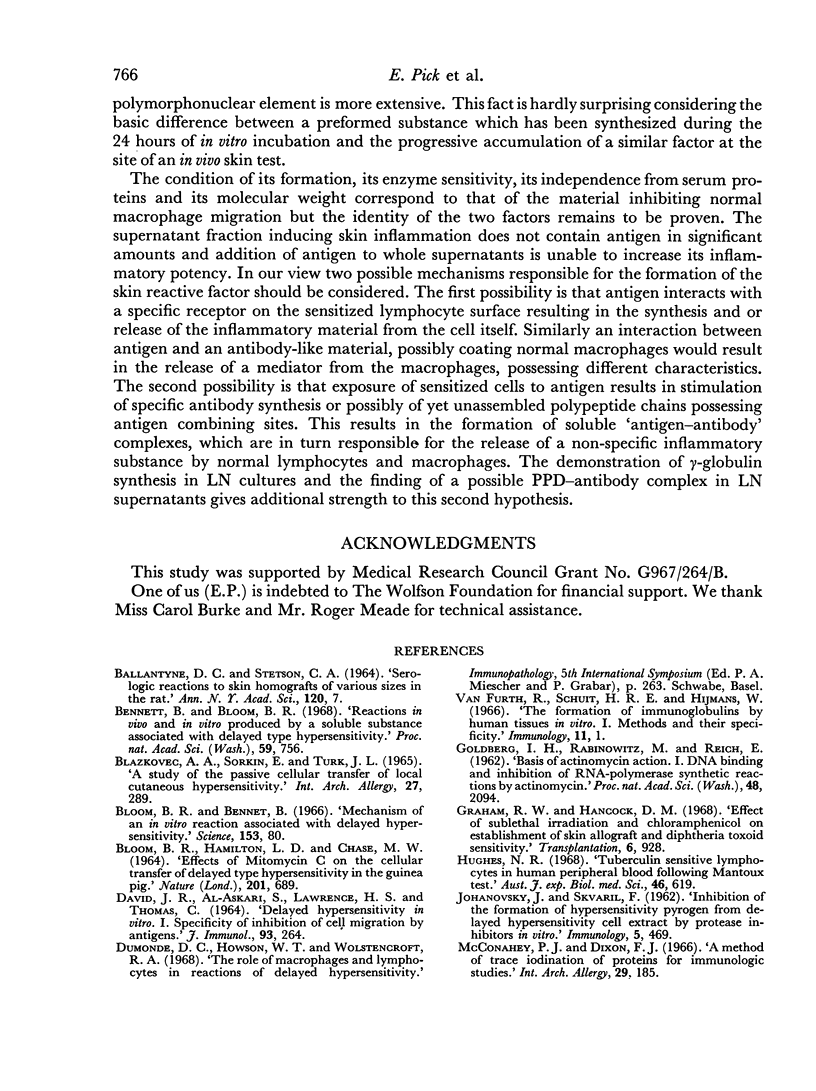
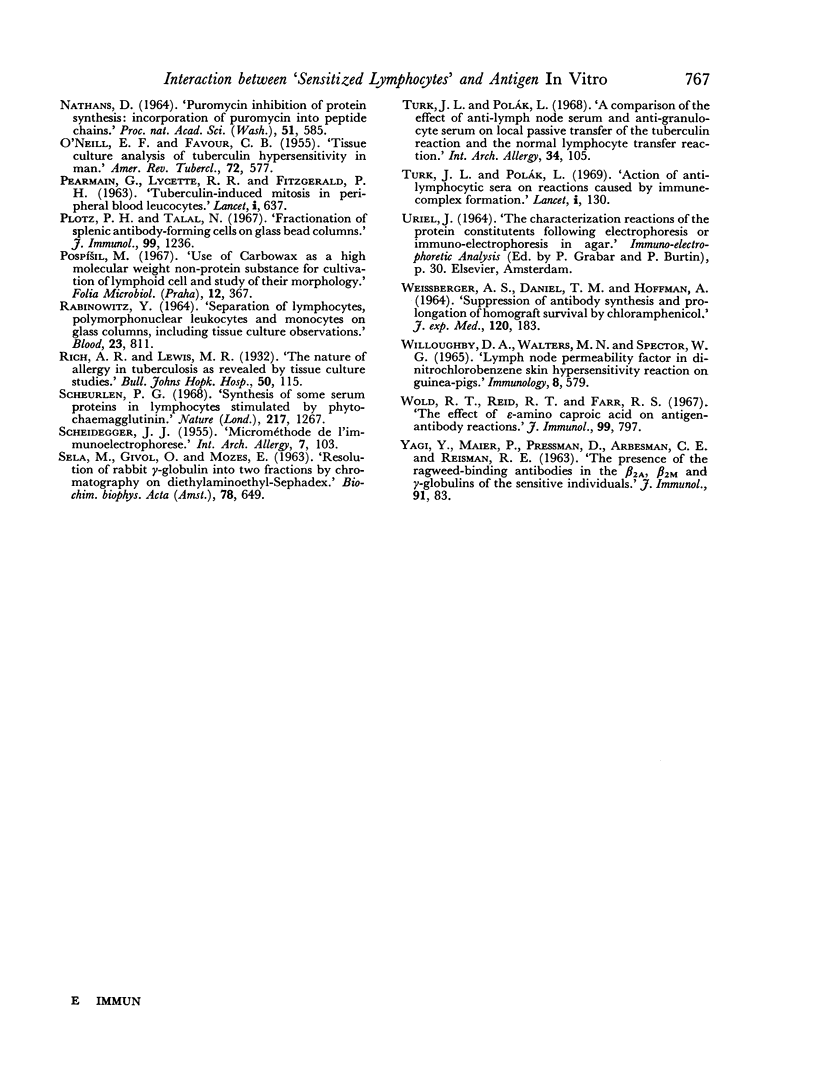
Images in this article
Selected References
These references are in PubMed. This may not be the complete list of references from this article.
- BALLANTYNE D. L., Jr, STETSON C. A., Jr SEROLOGIC REACTIONS TO SKIN HOMOGRAFTS OF VARIOUS SIZES IN THE RAT. Ann N Y Acad Sci. 1964 Nov 30;120:7–14. doi: 10.1111/j.1749-6632.1964.tb34700.x. [DOI] [PubMed] [Google Scholar]
- BLOOM B. R., HAMILTON L. D., CHASE M. W. EFFECTS OF MITOMYCIN C ON THE CELLULAR TRANSFER OF DELAYED-TYPE HYPERSENSITIVITY IN THE GUINEA PIG. Nature. 1964 Feb 15;201:689–691. doi: 10.1038/201689a0. [DOI] [PubMed] [Google Scholar]
- Bennett B., Bloom B. R. Reactions in vivo and in vitro produced by a soluble substance associated with delayed-type hypersensitivity. Proc Natl Acad Sci U S A. 1968 Mar;59(3):756–762. doi: 10.1073/pnas.59.3.756. [DOI] [PMC free article] [PubMed] [Google Scholar]
- Blazkovec A. A., Sorkin E., Turk J. L. A study of the passive cellular transfer of local cutaneous hypersensitivity. I. Passive transfer of delayed hypersensitivity in inbred and outbred guinea-pigs. Int Arch Allergy Appl Immunol. 1965;27(5):289–303. doi: 10.1159/000229624. [DOI] [PubMed] [Google Scholar]
- Bloom B. R., Bennett B. Mechanism of a reaction in vitro associated with delayed-type hypersensitivity. Science. 1966 Jul 1;153(3731):80–82. doi: 10.1126/science.153.3731.80. [DOI] [PubMed] [Google Scholar]
- DAVID J. R., AL-ASKARI S., LAWRENCE H. S., THOMAS L. DELAYED HYPERSENSITIVITY IN VITRO. I. THE SPECIFICITY OF INHIBITION OF CELL MIGRATION BY ANTIGENS. J Immunol. 1964 Aug;93:264–273. [PubMed] [Google Scholar]
- GOLDBERG I. H., RABINOWITZ M., REICH E. Basis of actinomycin action. I. DNA binding and inhibition of RNA-polymerase synthetic reactions by actinomycin. Proc Natl Acad Sci U S A. 1962 Dec 15;48:2094–2101. doi: 10.1073/pnas.48.12.2094. [DOI] [PMC free article] [PubMed] [Google Scholar]
- Graham R. W., Hancock D. M. Effects of sublethal irradiation and chloramphenicol on establishment of skin allograft and diphtheria toxoid sensitivity. Transplantation. 1968 Nov;6(8):928–933. doi: 10.1097/00007890-196811000-00007. [DOI] [PubMed] [Google Scholar]
- Hughes N. R. Tuberculin sensitive lymphocytes in human peripheral blood following Mantoux test. Aust J Exp Biol Med Sci. 1968 Oct;46(5):619–629. doi: 10.1038/icb.1968.168. [DOI] [PubMed] [Google Scholar]
- McConahey P. J., Dixon F. J. A method of trace iodination of proteins for immunologic studies. Int Arch Allergy Appl Immunol. 1966;29(2):185–189. doi: 10.1159/000229699. [DOI] [PubMed] [Google Scholar]
- NATHANS D. PUROMYCIN INHIBITION OF PROTEIN SYNTHESIS: INCORPORATION OF PUROMYCIN INTO PEPTIDE CHAINS. Proc Natl Acad Sci U S A. 1964 Apr;51:585–592. doi: 10.1073/pnas.51.4.585. [DOI] [PMC free article] [PubMed] [Google Scholar]
- O'NEILL E. F., FAVOUR C. B. Tissue culture analysis of tuberculin hypersensitivity in man. Am Rev Tuberc. 1955 Nov;72(5):577–600. doi: 10.1164/artpd.1955.72.5.577. [DOI] [PubMed] [Google Scholar]
- PEARMAIN G., LYCETTE R. R., FITZGERALD P. H. Tuberculin-induced mitosis in peripheral blood leucocytes. Lancet. 1963 Mar 23;1(7282):637–638. doi: 10.1016/s0140-6736(63)91275-3. [DOI] [PubMed] [Google Scholar]
- Plotz P. H., Talal N. Fractionation of splenic antibody-forming cells on glass bead columns. J Immunol. 1967 Dec;99(6):1236–1242. [PubMed] [Google Scholar]
- Pospisil M. Use of Carbowax as a high molecular weight nonprotein substance for cultivation of lymphoid cells and study of their morphology. Folia Microbiol (Praha) 1967;12(4):367–371. doi: 10.1007/BF02873813. [DOI] [PubMed] [Google Scholar]
- RABINOWITZ Y. SEPARATION OF LYMPHOCYTES, POLYMORPHONUCLEAR LEUKOCYTES AND MONOCYTES ON GLASS COLUMNS, INCLUDING TISSUE CULTURE OBSERVATIONS. Blood. 1964 Jun;23:811–828. [PubMed] [Google Scholar]
- SCHEIDEGGER J. J. Une micro-méthode de l'immuno-electrophorèse. Int Arch Allergy Appl Immunol. 1955;7(2):103–110. [PubMed] [Google Scholar]
- SELA M., GIVOL D., MOZES E. RESOLUTION OF RABBIT GAMMA-GLOBULIN INTO TWO FRACTIONS BY CHROMATOGRAPHY ON DIETHYLAMINOETHYL-SEPHADEX. Biochim Biophys Acta. 1963 Dec 13;78:649–657. doi: 10.1016/0006-3002(63)91031-x. [DOI] [PubMed] [Google Scholar]
- Scheurlen P. G. Synthesis of some serum proteins in lymphocytes stimulated by phytohaemagglutinin. Nature. 1968 Mar 30;217(5135):1267–1268. doi: 10.1038/2171267a0. [DOI] [PubMed] [Google Scholar]
- Turk J. L., Polak L. Action of antilymphocytic sera on reactions caused by immune-complex formation. Lancet. 1969 Jan 18;1(7586):130–131. doi: 10.1016/s0140-6736(69)91139-8. [DOI] [PubMed] [Google Scholar]
- Turk J. L., Polák L. A comparison of the effect of anti-lymph node serum and anti-granulocyte serum on local passive transfer of the tuberculin reaction and the normal lymphocyte transfer reaction. Int Arch Allergy Appl Immunol. 1968;34(2):105–118. doi: 10.1159/000230101. [DOI] [PubMed] [Google Scholar]
- Wold R. T., Reid R. T., Farr R. S. The effect of epsilon-aminocaproic acid on antigen-antibody reactions. J Immunol. 1967 Oct;99(4):797–802. [PubMed] [Google Scholar]
- YAGI Y., MAIER P., PRESSMAN D., ARBESMAN C. E., REISMAN R. E. THE PRESENCE OF THE RAGWEED-BINDING ANTIBODIES IN THE BETA-2A, BETA-2M, AND GAMMA GLOBULINS OF THE SENSITIVE INDIVIDUALS. J Immunol. 1963 Jul;91:83–89. [PubMed] [Google Scholar]
- van Furth R., Schuit R. E., Hijmans W. The formation of immunoglobulins by human tissues in vitro. I. The methods and their specificity. Immunology. 1966 Jul;11(1):1–11. [PMC free article] [PubMed] [Google Scholar]





